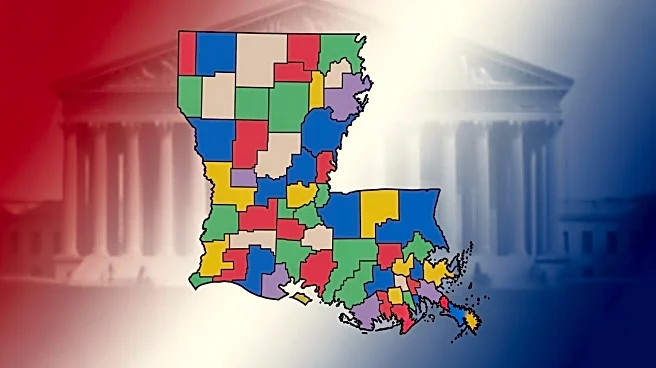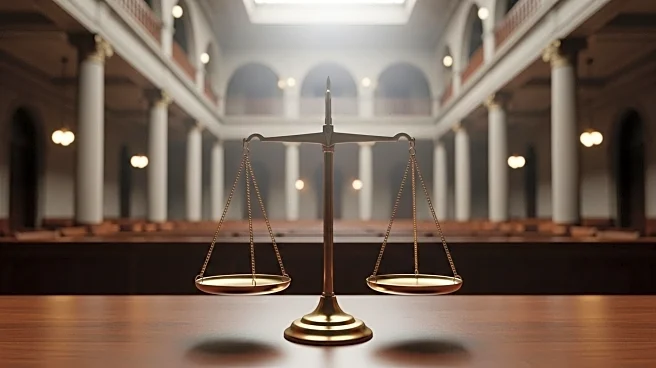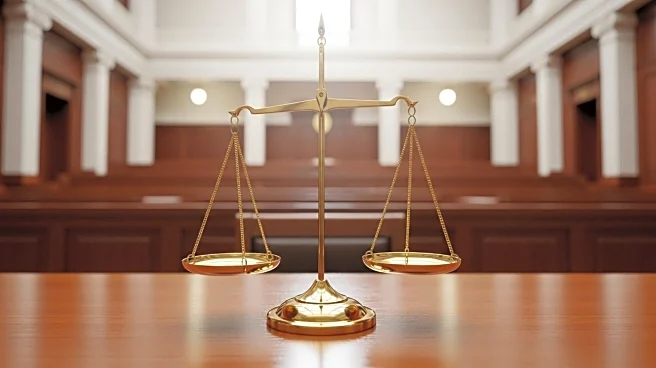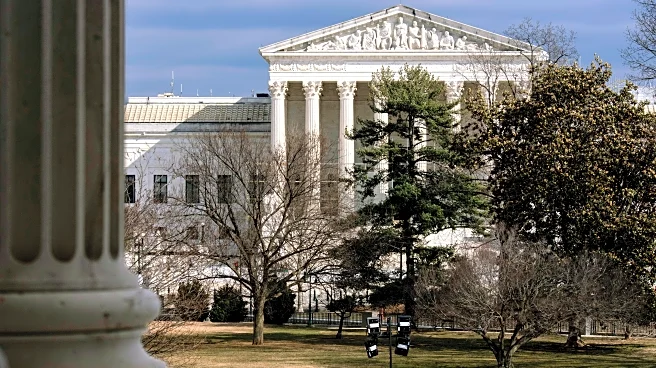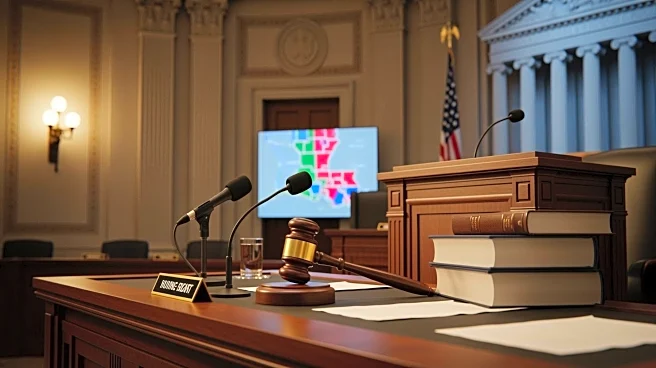What's Happening?
The Supreme Court is currently deliberating on a case concerning Louisiana's congressional map, which raises questions about the role of race in drawing electoral boundaries. The case examines whether states can factor in racial demographics when establishing
electoral districts. This issue is pivotal as it could influence how electoral maps are drawn across the United States, potentially affecting representation in Congress. The arguments presented to the court are expected to address the balance between fair representation and racial considerations, a topic that has been contentious in previous cases.
Why It's Important?
The outcome of this case could have significant implications for electoral politics in the U.S. If the Supreme Court rules that race can be considered in drawing electoral maps, it may lead to changes in how districts are configured, potentially impacting minority representation in Congress. Conversely, a ruling against considering race could lead to challenges in ensuring fair representation for diverse communities. This decision will likely influence future redistricting efforts and could set a precedent for how states approach the creation of electoral districts, affecting political power dynamics and voter representation.
What's Next?
The Supreme Court's decision is awaited with anticipation, as it will guide states in their redistricting processes. Depending on the ruling, states may need to revise their current maps or defend their existing configurations. Political leaders and civil rights groups are expected to respond to the decision, potentially leading to further legal challenges or legislative actions. The ruling could also prompt discussions on the need for federal guidelines on redistricting to ensure equitable representation.
